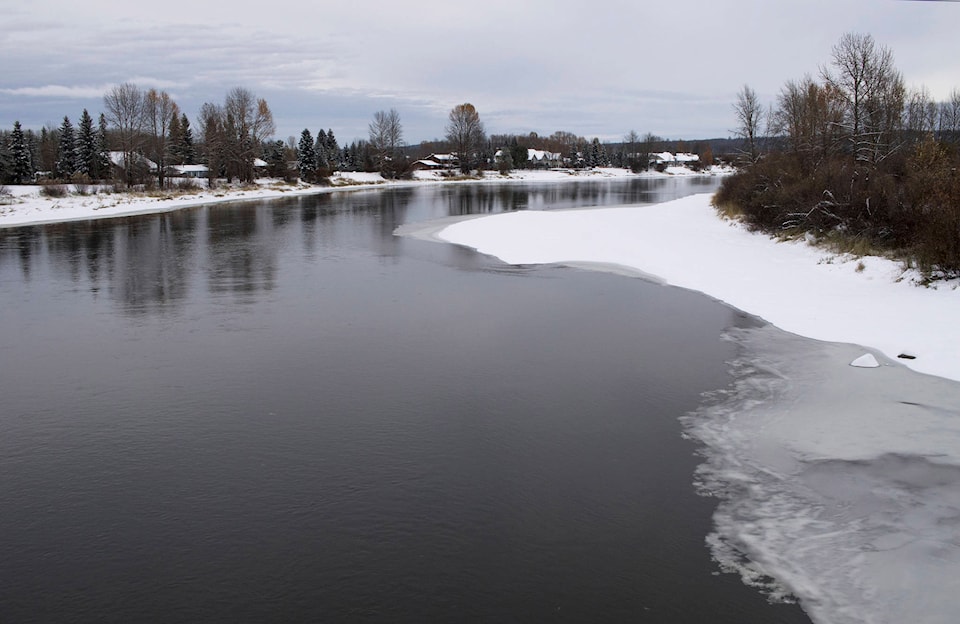The Regional District of Bulkley-Nechako passed a resolution to acknowledge the “long-standing interference” on the claims of Indigenous communities in the Nechako First Nations region.
Construction and operation of the Kenney Dam has caused interference on the claim of Aboriginal rights and title of First Nations, specifically Saik’uz First Nation, Stellat’en First Nation and Nadleh Whut’en, RDBN officials noted in a March 10 news release.
Officials are asking the federal government, provincial government and Rio Tinto to do “all things necessary to support the efforts of the Nechako First Nations to restore the ecosystem functioning of the Nechako River and its affected tributaries.”
Gerry Thiessen, RDBN chairperson and Vanderhoof Mayor said, “Local communities, First Nations and non-Indigenous communities alike have suffered from the impacts of the Nechako water management regime which has prioritized energy production over a healthy river and fish populations.”
READ MORE: Vanderhoof mayor frustrated over province’s back-and-forth orders over river management
Thiessen said the citizens of the region who depend on the river, “deserve a healthy river and watershed — and a legitimate seat at the table when it comes to water management.”
He also said the RDBN has concerns over Rio Tinto’s Water Engagement Initiative as being a sufficient or “legitimate” forum for community input on water management. The Water Engagement Initiative was started by Rio Tinto in 2019 as a means of collaborating with First Nations, members of the public and governments in the Nechako region.
The resolution which was published March 9 by the regional district stated the Nechako River is no longer a functional ecosystem and that more naturalized flows in the river and its affected tributaries are required to restore ecosystem functions in the Nechako Watershed.
In the resolution, the regional district stated it considers it “desirable” to find an adaptive co-management regime for governance involving the Nechako First Nations, other impacted First Nations, and local governments within the Nechako Watershed, to collectively represent the watershed region.
Priscilla Mueller, Chief of Saik’uz First Nation, said the community welcomed the support it has received from the regional district to restore the health of the Nechako.
“The regional district resolution demonstrates a commitment to environmental stewardship as well as to reconciliation. We look forward to collaborating with our non-Indigenous neighbours including the regional district, to make our shared river flourish again.”
READ MORE: Saik’uz and Stellat’en First Nations court battle against RioTinto Alcan
Stellat’en First Nation Chief Robert Mitchell said the Nechako was the “economic and spiritual lifeblood — our grocery store, our highway, our church.”
“It was taken away from us and converted into an industrial canal without any consultation or compensation. We need what was lost to be returned. And when it is — when the river is brought back to health — everyone in the region will stand to benefit.”
Larry Nooski, Chief for Nadleh Whut’en, said after the Kenney Dam was built, “water stopped flowing the way it always had.” He said he remembers the heartbreak felt by elders at the time as they realized the construction of the dam brought an end to a great river.
In an email statement March 10, Rio Tinto spokesperson said, “Rio Tinto recognises the importance of these issues and remains committed to maintaining an open dialogue with local First Nations and the Regional District of Bulkley-Nechako to find solutions. Through the Water Engagement Initiative, we welcome a discussion to continue improving the health of the Nechako river and to address collaboratively the many interests represented in the watershed.”
Nechako River history
The Nechako was one of the largest tributaries of the Fraser River and was a breeding ground for the Nechako white sturgeon and contributed significantly to highly valued salmon populations.
Kenney Dam was constructed in the 1950s, to provide hydro power to an aluminum smelter in Kitimat. As stated by the regional district, completion of the dam fundamentally altered flow patterns of the river.
Most of the water that would have otherwise flowed down the Nechako has been diverted west, through the mountains, to produce hydro power for the smelter. According to the release issued by the regional district, from 1985 to 2018 the average flow of the Upper Nechako River is estimated to have been just 36 percent of the natural flow prior to the construction of the dam.
Reduction in the natural flow has affected fish populations with the Nechako White sturgeon on the precipice of extinction. Additionally, officials said the lack of spring freshet and the de-watering of the floodplain and side channels are interfering with chinook salmon productivity and recruitment.
“Reconciliation between Indigenous and non-Indigenous peoples in the Nechako region is incompatible with the current operation of the Kenney Dam and Nechako Reservoir. The regional district stands shoulder-to-shoulder with the Nechako First Nations in opposition to the continued degradation of the Nechako watershed and in the hope for a meaningful role in the management of a new, more natural flow regime,” stated the release.
READ MORE: Cheslatta Carrier Nation and Rio Tinto sign a historic agreement
Aman Parhar
Editor - Vanderhoof Omineca Express, Caledonia Courier
aman.parhar@ominecaexpress.com
Like us on Facebook and follow us on Twitter
